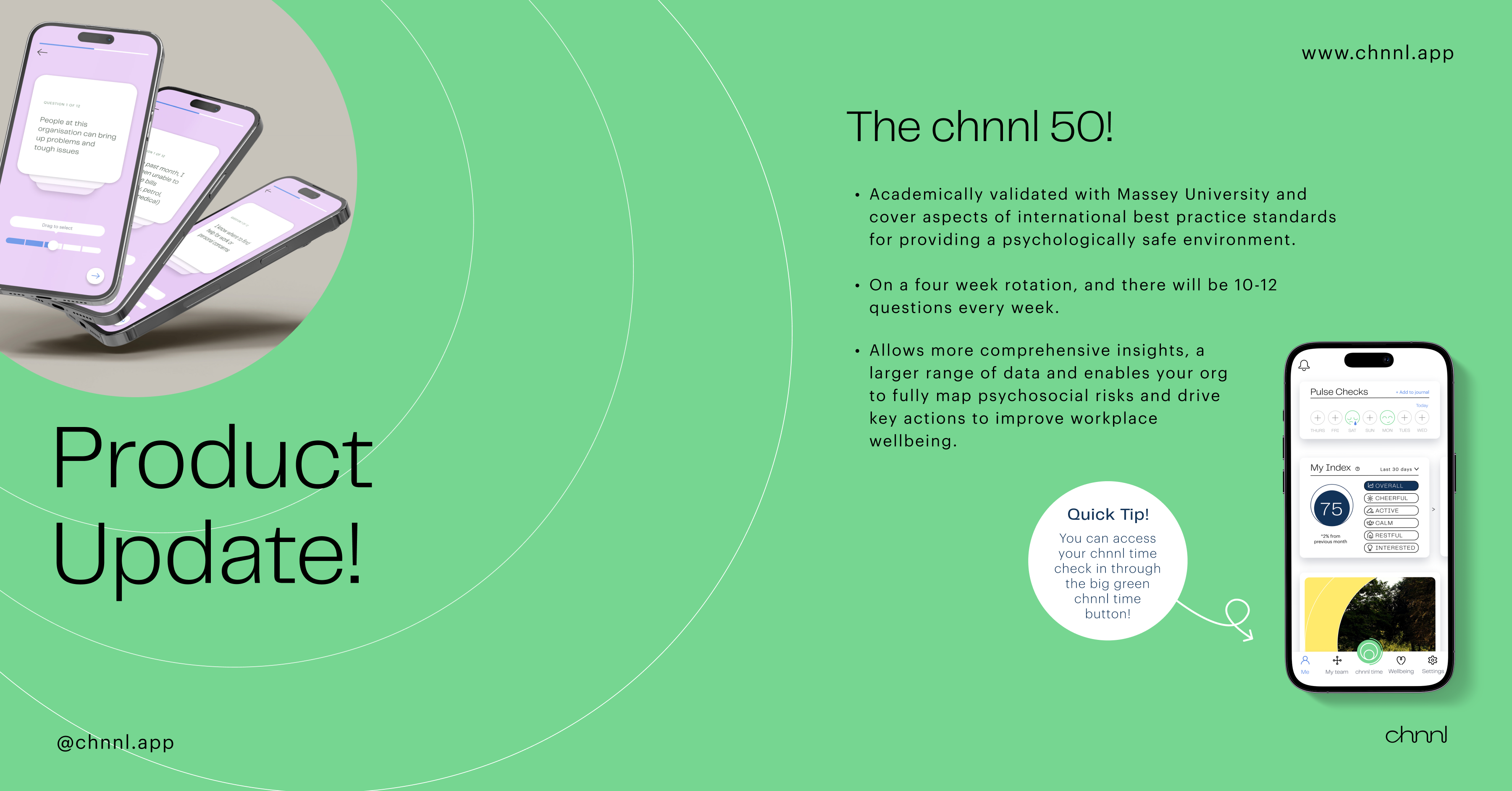Resources Blog
Psychological Safety: Work Design
4 MIN READ
What is Work Design?
Welcome to the November team challenge, where our focus centres on the critical topic of psychological safety within the workplace. To explore this concept, we will engage in a thoughtful analysis of selected video clips, drawn from our favourite TV shows and movies, showcasing instances of both effective and not so effective of psychological safety under the topics in chnnls' Level Up Framework*. These are Work Design, Culture & Leadership, Personal Factors, Social Connections, Diversity, Equity, Inclusion and Mana Whenua.
In Day One, our attention was directed toward the realm of Work Design, prompting us to consider its profound implications on employee well-being. As we embark on this exploration, we invite you to observe the featured video clip, paying particular attention to potential risks associated with low psychological safety.
We encourage you to reflect on elements such as job clarity, communication of roles and expectations, and the impact of work-related pressures and overtime on mental health and team culture. Our goal is to identify and discuss psychosocial risks inherent in work design, fostering a comprehensive understanding of factors that may influence mental health and overall well-being in the workplace.
Level Up Framework*
Work Design Hazards Included:
1.1.1 Working hours/schedule
1.1.2 Workload and pace
1.1.3 Lack of resources/inadequate equipment
1.1.4 Unclear goals and expectations
1.1.5 Lack of involvement in decision making
1.1.6 Pace of work/unrealistic time frames
Business Outcomes Included:
1.1.7 Burnout
1.1.8 Psychosocial Risk Score
1.1.9 Wellbeing Score
The Risks
What WE IDENTIFIED
In the first clip we saw five new interns being inducted into the working environment at the Hospital within Greys Anatomy. There was an inappropriate induction involving expectations regarding pace of work, workload, hours of work, job clarity, and perceived organisational support.
In the second clip which also took place in Greys Anatomy, Dr. Taryn Helm is expressing clear signs of burnout which took place due to disregard of work-design factors. This resulted in her feeling emotionally distant because of being overworked, which is a direct consequence of work-design factors and links to psychological injury.
How does chnnl help you measure and identify work-design hazards:
Weekly Pulse Screening and Assessment Survey:
1. chnnl-50 questions
Through chnnls' academically validated check-in questions, work-design hazards are measured and monitored. This provides regular insight and indication towards the impact of work-design in an organisation and how this effects psychological safety, alongside wellbeing.
Example screening questions:
"In my job I know exactly what areas are my responsibility"
Validated Burnout Assessment questions:
"At work, I feel mentally exhausted"
"When I’m working, I have trouble concentrating"
learn more about chnnl-50 here
2. Journals
Free text anonymous journaling for anyone in the organisation to reflect on the workplace environment, climate and culture. The chnnl AI then codes the free text into key themes and sentiments and matches them to psychosocial risk tags. These are then reviewed by a clinical team before being finalised for organisation reporting and recommended actions. Having a free text reflection tool enables deep and rich insights into the employees experiences and celebrates the protective factors in the workplace as well as the potential risks.
3. Risk identification and mitigation
At chnnl, we use a bowtie risk matrix to identify risks and what to do before an injury has occurred, and then also to facilitate mitigating interventions in the event of a psychological injury, to ensure psychologically safe workplaces.
See this page for expansion on chnnls' psychosocial Risk Matrix
What the Experts Say:
Mr Matt clark
In Week 2 of the Safety Challenge, we had Mr Matt Clark joining us. He is the Chief Medical Officer at Southern Cross Hospitals. With an impressive medical background and wealth of clinical experience, Matt is an experienced Surgeon, Clinical Associate Professor, and a member of the examinations court for the Royal Australasian College of Surgeons.
Taking Action . . .
- The time in time out "Surgical Safety Checklist" has been one of the single biggest advanced in patient safety in a generation
- It is critical to pause and take a moment to review things before going ahead
- Empowering people to speak up, speaking about safety issues and anything they do not feel comfortable with
- Have your team on the same "Page" when in surgery, keeping the social connections aspect alive is the most valuable thing you can do.

References:
https://www.worksafe.govt.nz/research/psychosocial-hazards-in-work-environments-and-effective-approaches-for-managing-them/
https://www.safeworkaustralia.gov.au/safety-topic/managing-health-and-safety/mental-health/psychosocial-hazards
https://burnoutassessmenttool.be/wp-content/uploads/2020/08/User-Manual-BAT-version-2.0.pdf
https://health.nzdf.mil.nz/assets/Documents/Burnout-Assessment-Tool.pdf
Written by chnnl Team

.svg)


.svg)